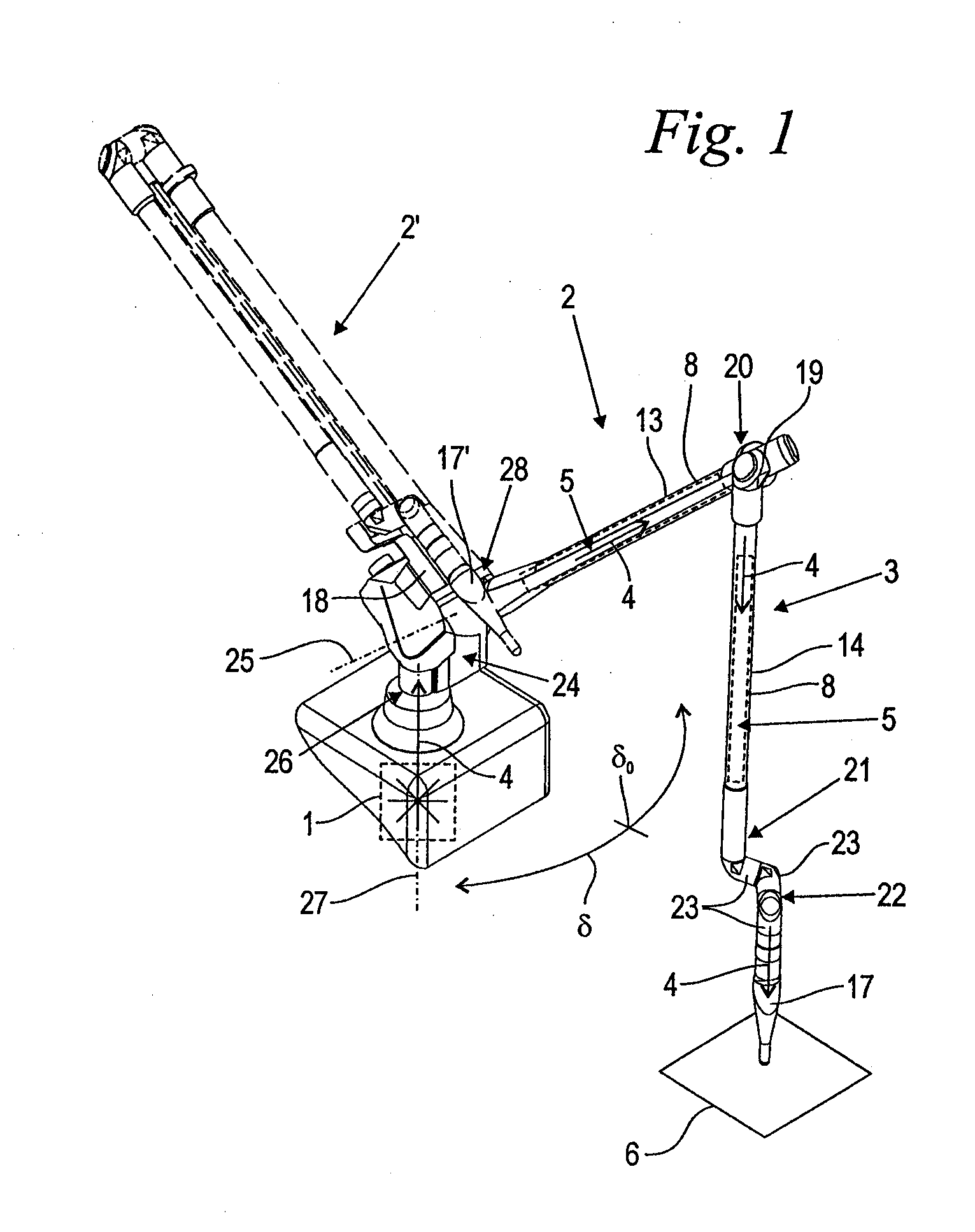Laser System
a laser system and laser beam technology, applied in the field of laser beam systems, can solve the problems of unwanted nonlinear optical effects in the fibers, optical breakdown can occur before the beam reaches the fiber, and disadvantageous effects that increase with increasing power density, and achieve the effects of increasing power density, low beam divergence, and even further increase of output beams
- Summary
- Abstract
- Description
- Claims
- Application Information
AI Technical Summary
Benefits of technology
Problems solved by technology
Method used
Image
Examples
Embodiment Construction
[0028]FIG. 1 shows in a perspective view a laser system embodied in accordance with the invention, comprising a laser source 1 and a manually guided articulated arm 2. The articulated arm 2 comprises a stationary support 24 that is pivotable by means of a pivot joint 26 about a vertical pivot axis 27; a first arm section 13 and a second arm section 14; an articulated arm section 22; and a hand piece 17. The first arm section 13 is supported by means of a pivot joint 28 with a horizontal pivot axis 25 on the stationary support 24. On the free end 20 of the first arm section 13 positioned opposite the pivot joint 28, an additional pivot joint 19 is provided with which the second arm section 14 is pivotably supported on the first arm section 13. In the area of the free end 21 of the second arm section 14, the hand piece 17 is arranged. Between the free end 21 of the second arm section 14 and the hand piece 17, the articulated arm section 22 is arranged that comprises at least two, in t...
PUM
| Property | Measurement | Unit |
|---|---|---|
| pressure | aaaaa | aaaaa |
| pressure | aaaaa | aaaaa |
| pressure | aaaaa | aaaaa |
Abstract
Description
Claims
Application Information
 Login to View More
Login to View More - R&D
- Intellectual Property
- Life Sciences
- Materials
- Tech Scout
- Unparalleled Data Quality
- Higher Quality Content
- 60% Fewer Hallucinations
Browse by: Latest US Patents, China's latest patents, Technical Efficacy Thesaurus, Application Domain, Technology Topic, Popular Technical Reports.
© 2025 PatSnap. All rights reserved.Legal|Privacy policy|Modern Slavery Act Transparency Statement|Sitemap|About US| Contact US: help@patsnap.com



